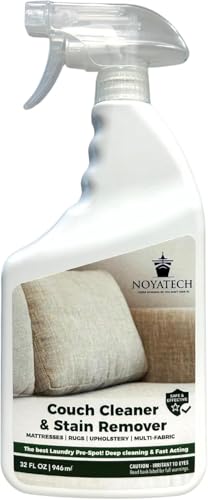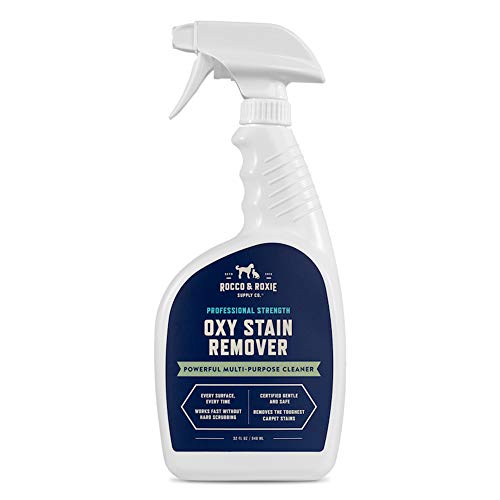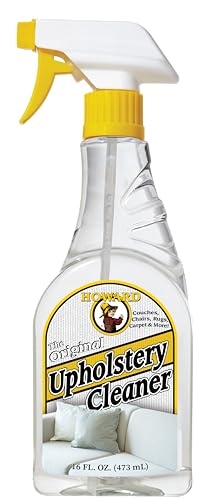Before diving into the process of how to deodorize upholstered furniture, it's essential to gather all the cleaning supplies you'll need. Having everything in one place not only streamlines the cleaning process but also ensures you don’t have to pause midway to hunt for an essential item. Start by making a checklist of supplies that will make your task easier.
First on your list should be a vacuum cleaner with an upholstery attachment. This will help remove any loose dirt, hair, or debris that may be trapped in the fibers of your furniture. You should also stock up on baking soda, a powerful natural deodorizer. It’s excellent for absorbing odors without leaving any harmful residues. Lastly, prepare a clean spray bottle filled with a mixture of equal parts water and white vinegar; this can effectively combat tough smells.
Don’t forget to include soft cloths or microfiber towels for wiping down surfaces and applying solutions. If you prefer a more pleasant scent, consider essential oils like lavender or lemon to add to your cleaning mixture. These oils not only enhance the smell of your upholstery but may also have antibacterial properties. With your supplies ready, you’ll be well-prepared to tackle the task of how to deodorize upholstered furniture effectively.
Test Fabric for Colorfastness
Before diving into the methods of how to deodorize upholstered furniture, it's essential to ensure that your fabric can withstand the cleaning process without losing its color or texture. Testing fabric for colorfastness is a crucial step to prevent any mishaps during your cleaning efforts. Fortunately, this is a simple process that can save you a lot of trouble down the line.
To test for colorfastness, start by selecting a hidden area of the upholstery, such as the underside of a cushion or the back of the furniture. Moisten a white cloth or cotton ball with water, or use a mixture of mild soap and water. Gently dab the fabric with the damp cloth and observe whether any color transfers onto it. If you see dye on the cloth, your fabric might not be colorfast.
In cases where you discover your upholstery is prone to color bleeding, it’s vital to choose your deodorizing method carefully. Opt for dry cleaning methods or use products specifically designed for delicate fabrics. After ensuring your fabric is safe to clean, you can confidently move forward with learning how to deodorize upholstered furniture without causing damage.
Furthermore, always read the care label on your upholstered item before you begin cleaning. Many times, manufacturers provide essential information about how to treat the fabric, which can aid you in selecting the best product or method for deodorizing. Remember, knowing how to deodorize upholstered furniture effectively starts with understanding your fabric type and testing for colorfastness.
Apply Deodorizing Solutions Carefully
When it comes to how to deodorize upholstered furniture, safety should always come first. Many deodorizing solutions contain chemicals that can be harsh or even harmful to both your furniture and your health. Before applying any product, it’s important to read the label carefully. Look for any warnings or recommendations on the maximum amount you should use. This will help ensure that your furniture stays in good condition while effectively removing unwanted odors.
Additionally, conducting a patch test is a good practice before fully applying a deodorizer. Choose a discreet area of your furniture, apply a small amount of the solution, and wait for a few minutes to see how the fabric reacts. This simple step can help prevent any potential discoloration or damage, allowing you to confidently proceed with the rest of the application.
When you begin to apply the deodorizing solution, use it sparingly. Less is often more when it comes to these products. Over-saturating your upholstery can lead to longer drying times and might even cause musty smells if moisture is trapped within the fabric. Instead, apply the solution lightly and evenly, giving your furniture the chance to breathe and properly absorb the deodorizing ingredients.
Lastly, always ventilate the area where you’re working. Open windows and doors or use fans to help circulate air. Good airflow not only aids in the drying process but also helps eliminate any lingering odors. By taking these precautions, you can effectively deodorize your upholstered furniture without causing harm, ensuring that your living space remains fresh and inviting.
Allow Time for Drying and Freshening
When you finish cleaning, open windows and doors to increase air circulation in the room. If possible, place the furniture outside in a shaded area to dry, as sunlight can help eliminate odors. Just remember to check for any potential fading or damage from direct sunlight. If moving your furniture isn't an option, using fans can help speed up the drying process indoors.
In addition to drying, you can further freshen your upholstery by sprinkling baking soda on the surfaces. This natural deodorizer absorbs lingering smells while your fabric dries. Let the baking soda sit for several hours, or even overnight, to reap the maximum benefit. After it has had time to work, vacuum the baking soda thoroughly to remove any traces along with the stubborn odors it has absorbed.
Once everything is dry and the baking soda has been vacuumed up, you may want to treat your upholstery with a fabric-safe spray or essential oils. Spraying a light mist of diluted vinegar or a mixture of water with essential oils can leave your furniture smelling fresh and inviting. This additional touch serves as a wonderful finish to your project on how to deodorize upholstered furniture, allowing your pieces to look and smell their best.




